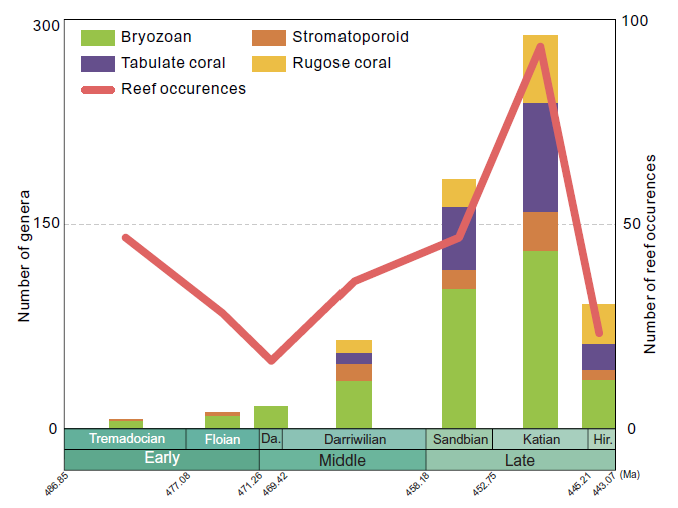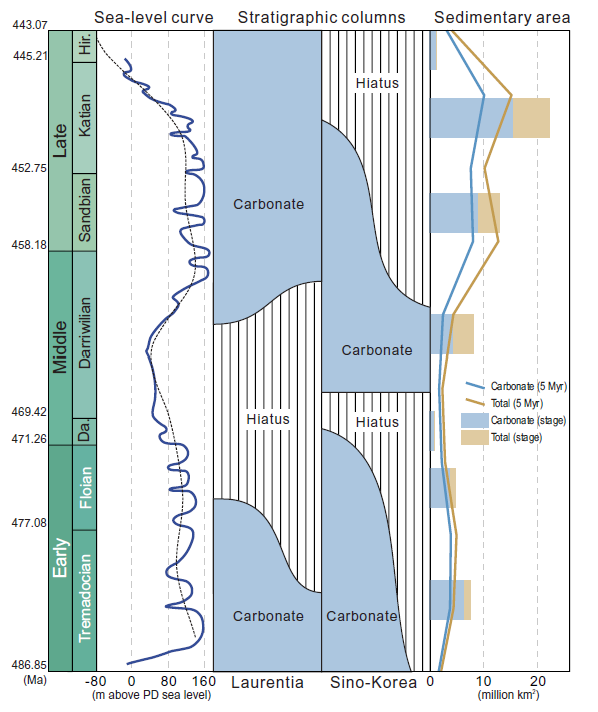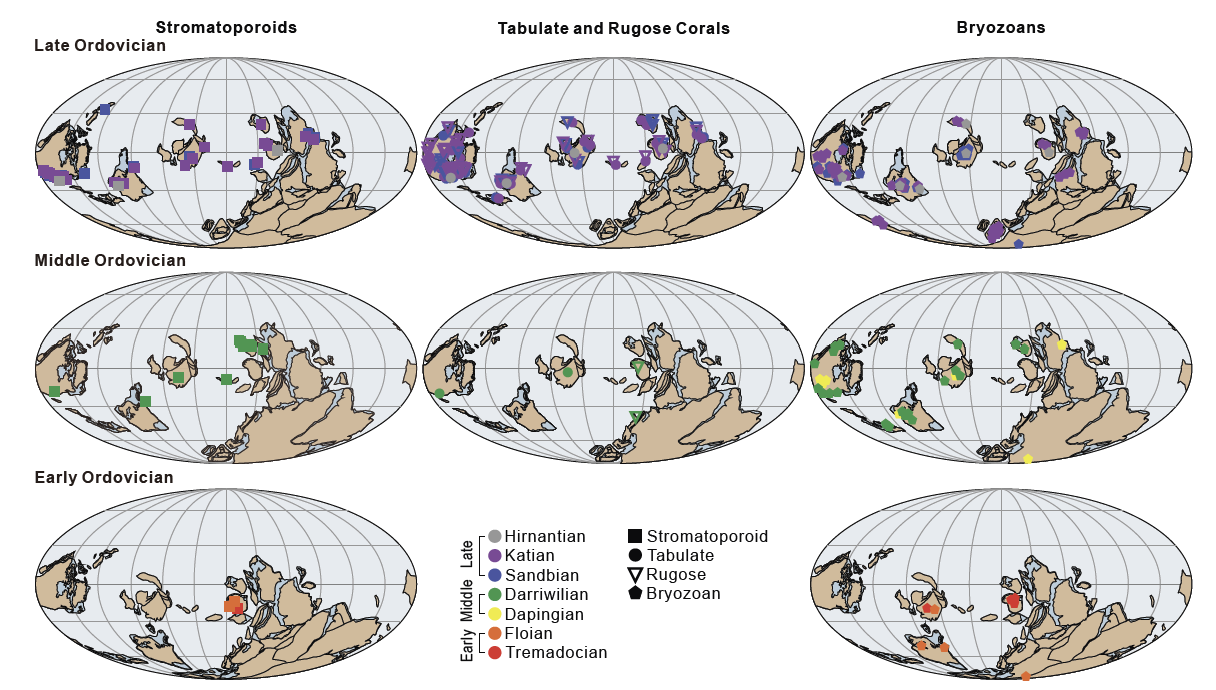For several decades, the scientific consensus held that reef-building organisms like stromatoporoid sponges, corals, and bryozoans underwent sudden "explosive" development during the Great Ordovician Biodiversification Event (GOBE) in the late Darriwilian (Middle Ordovician), dramatically increasing marine biodiversity. However, recent discoveries by researchers from the Nanjing Institute of Geology and Palaeontology, Chinese Academy of Sciences challenged this narrative. The team identified the oldest known stromatoporoid fossils (~480 million years old) in Yuan'an, Yichang, Hubei Province—pushing the record of stromatoporoid reefs back to Early Ordovician. Surprisingly, this was followed by a 20-million-year "reef gap" where fossil records nearly vanished, raising critical questions: Why did reef records disappear after the Early Ordovician? Why did reef-building organisms seemingly vanish for 20 million years? And why did they suddenly "explode" in diversity during the late Darriwilian?
On June 30th, researchers led by Li Qijian (NIGPAS), Jeon Juwan (Korea University), and Lee Jeong-Hyun (Chungnam National University) integrated stratigraphic sequences and fossil occurrence data from major paleocontinents. Data based correlation analyses revealed that the apparent "explosion" may not reflect true evolutionary dynamics of reef ecosystem during the late Middle Ordovician. Instead, it likely stems from a global sea-level fall (~475–460 million years ago) that erased shallow marine carbonate environments—critical for reef development and fossil preservation. This regression caused widespread erosion, wiping out fossil records of early reef-builders. When sea levels rose again in the mid-late Darriwilian, already-diversified organisms rapidly recolonized newly flooded habitats, creating an illusion of sudden diversification.
This phenomenon—termed the "Sppil-Rongis effect" (the inverse of the Signor-Lipps effect)—demonstrates how improved preservation conditions can generate false signals of abrupt biological radiation. Critically, the study reframes the GOBE not as a discrete "explosive event" but as part of a continuous evolutionary trajectory, repeatedly interrupted and reshaped by sea-level fluctuations and preservation biases. This supports the view that the Cambrian Explosion and Ordovician Biodiversification constitute a single extended diversification process.
The research underscores how preservation biases fundamentally distort our understanding of evolutionary history, emphasizing the need to disentangle true biological signals from geological artifacts in reconstructing Earth's life story.

Fig. 1. Diversity (number of genera) of reef-building metazoans (stromatoporoids, corals, and bryozoans) and reef occurrences through time.

Fig. 2. Global sea-level curve during the Ordovician, schematic stratigraphic columns for Laurentia and Sino-Korean Block, and carbonate and siliciclastic sedimentary rock area.

Fig. 3. Global paleogeographic maps of the Early, Middle, and Late Ordovician, showing the distribution of reef-building metazoans (stromatoporoids, tabulate and rugose corals, and bryozoans).

Fig. 4. Schematic illustration of the Sppil–Rongis effect in reef evolution, coupled with sea-level changes.
Download:
